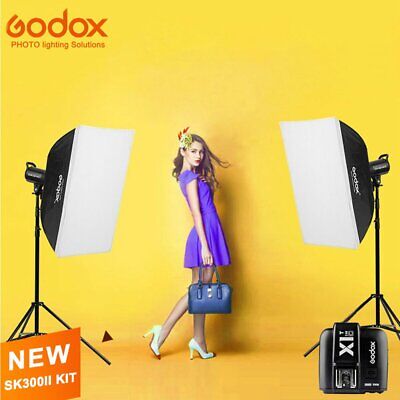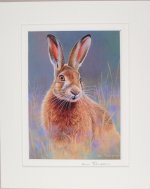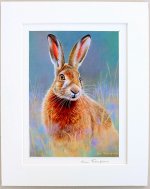Hello,
I am a new member. I enjoy photography but have limited experience and a basic camera. I am seeking advice on how best to photograph a particular product I want to sell online. The products are mounted prints of original paintings by an artist friend. I have attached a couple of images that are my best results so far. I am posting this in the lighting forum because I feel sure lighting is key to me achieving better results. The mounted prints in the images I have attached are 10" x 8". I may wish to photo some that are up to 16" x 12".
My camera is a Fuji X100S. I know it has limitations, but it takes great shots and I don't want to buy another camera. For the attached images I used natural light at an open doorway. I do have a budget for lighting for this project. Let’s say £300 for starters. Can anyone suggest a lighting setup that might give me attractive photos of this product for that sort of budget? I have a couple of tripods. Is there a Light Box that anyone recommends that would take up to 16" x 12"?
Lighting aside, For the attached images I used a tripod and had the camera set on the (idiot proof) program mode. I did increase the exposure. For the subject I have described would anyone have recommendations for adjusting the camera settings? I am wondering if White Balance adjustments would make a difference.
Thanks in advance for any suggestions. I will let you know how I get on.
Cheers, Colin.
[
I am a new member. I enjoy photography but have limited experience and a basic camera. I am seeking advice on how best to photograph a particular product I want to sell online. The products are mounted prints of original paintings by an artist friend. I have attached a couple of images that are my best results so far. I am posting this in the lighting forum because I feel sure lighting is key to me achieving better results. The mounted prints in the images I have attached are 10" x 8". I may wish to photo some that are up to 16" x 12".
My camera is a Fuji X100S. I know it has limitations, but it takes great shots and I don't want to buy another camera. For the attached images I used natural light at an open doorway. I do have a budget for lighting for this project. Let’s say £300 for starters. Can anyone suggest a lighting setup that might give me attractive photos of this product for that sort of budget? I have a couple of tripods. Is there a Light Box that anyone recommends that would take up to 16" x 12"?
Lighting aside, For the attached images I used a tripod and had the camera set on the (idiot proof) program mode. I did increase the exposure. For the subject I have described would anyone have recommendations for adjusting the camera settings? I am wondering if White Balance adjustments would make a difference.
Thanks in advance for any suggestions. I will let you know how I get on.
Cheers, Colin.
[
Last edited:





